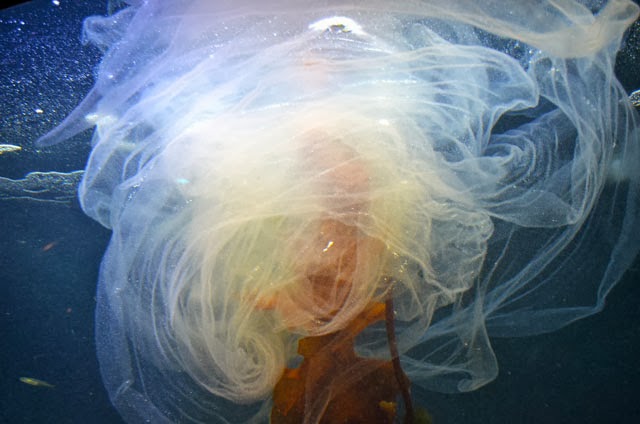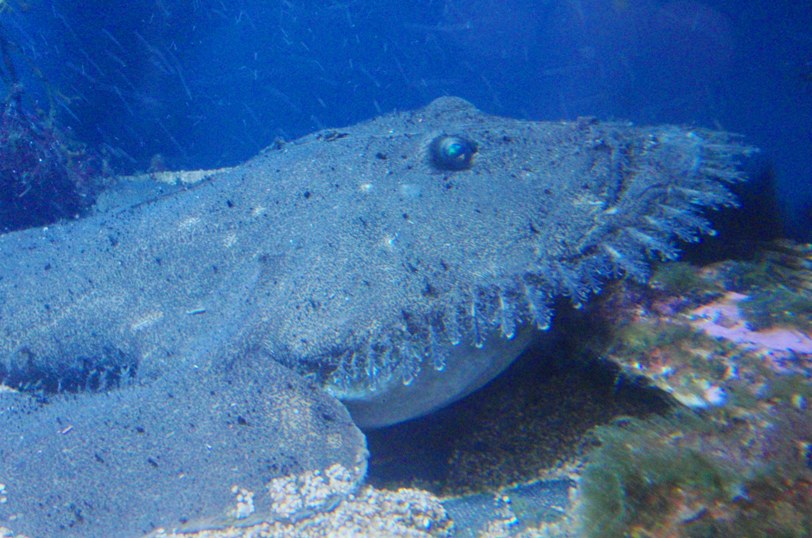
Goosefish Lays Billowy Veil Holding 1 Million Eggs

Goosefish, also known as monkfish, may be among the most aesthetically challenged creatures around, but when the homely bottom-feeders lay their eggs, they create something beautiful: a gauzy, billowy veil that drifts in the ocean for days.
On Monday afternoon (Sept. 23), a female monkfish at the New England Aquarium in Boston laid her third egg veil this year.
The veil looks something like a 60-foot-long (18 meters) sheet of delicate bubble wrap, covered in about a million pinhead-sized eggs waiting to be fertilized. [See Images of the Goosefish's Amazing Egg Veil]
"In the wild, when the female is swimming around releasing the egg veil, the male is swimming around her and as they intertwine, the male releases its sperm," aquarist Bill Murphy, of New England Aquarium, told LiveScience.
The aquarium's female fish doesn't have a male counterpart, so these eggs won't result in any offspring. (Murphy said he tried putting two of the fish in one tank before, but they are a solitary, predatory species, and the pairing didn't work out.) For now, visitors will be able to see veil float around in the goosefish's tank until it starts to rot.
Murphy said he didn't catch the veil-laying on Monday, but in the weeks leading up to the moments-long event, there are usually signs that a sheet of eggs is coming — namely, the fish starts looking bloated.
"She looks huge, like she swallowed a beach ball," Murphy said.
Get the world’s most fascinating discoveries delivered straight to your inbox.
Monkfish are anglerfish that sit, partially buried, at the bottom of the ocean, attracting prey with a lure in the form of a flap of skin that looks like a small fish, Murphy said. When its victim is close enough, the monkfish opens its big mouth suddenly, creating a vacuum to suck in its prey.
The fish can grow to be more than 5 feet long (1.5 meters) and are found throughout New England, at depths ranging from 10 feet to 200 feet (3 to 60 m). Monkfish can also be found on dinner plates, and are sometimes nicknamed "the poor man's lobster" because of their muscular tails.
Follow Megan Gannon on Twitter and Google+. Follow us @livescience, Facebook & Google+. Original article on LiveScience.


